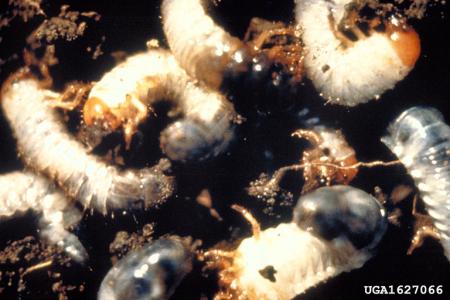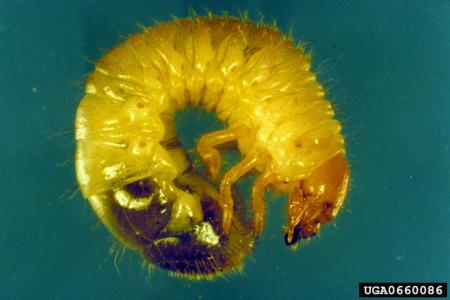Prevention, Mitigation and Management of Japanese Beetle
Colorado was originally thought to be protected from invasive Japanese beetle,Popillia japonica,colonization and establishment due to our semi-arid climate. Larvae and eggs of Japanese beetle need at least 10 inches of soil moisture to thrive. Without supplemental irrigation, Colorado’s environmentwould not be conducive to Japanese beetle survival. However, irrigation does occur to support many of our agricultural crops and urban landscapes, thereby making the pest a risk to certain areas of the state. Denver Water estimates an annual amount of 27 inches of water is applied to the average individual urban landscape to support turfgrass and landscape trees and shrubs not indigenous to Colorado.
For commercial nurseries and garden centers in Colorado, Japanese beetle is analogous with a noxious weed. There is zero tolerance for this pest as it has high economic consequences for nurseries whoexport stock to western states. For nurseries, landscape contractors, and garden centers are known to have Japanese beetles present, aggressive control is warranted with chemicals. Retail nurseries wouldn’t sell a noxious weed, and they make every effort not to sell plants infested with Japanese beetle.
For homeowners, landscape managers, and Colorado agriculture producers this pest is also devastating. Damage done to ornamentals, grasses and fruit crops in Colorado can be significant. Control is highly desirable using an integrated approach employing several different strategies.
The Japanese beetle is a scarab beetle, approximately one-half inch long with a metallic green body and copper-colored covers on its wings. Close examination with a hand lens will reveal 12 tufts of white hairs bordering the margin of the wing covers. Larvae, or grubs, reside in the soil. They are about an inch long when fully grown and lie in a curled or “C” shaped position. Close examination of the grubs will reveal a V-shaped series of bristles on the tip of the abdomen.
The insect feeds on roots when in the grub stage, leaves and flowers of many landscape ornamental and agricultural plants while in the adult stage, with a host range of over 300 species of plants including:
Host
- Preferred Host
-
Acer (Japanese and Norway Maple) Populus Aesulus hippocastanum (horse chestnut) Potentilla Althaea (holly hock) Prunus (fruit trees) Amalanchier (serviceberry) Quercus rubrum (red oak) Asparagus Rhamnus (buckthorn) Betula (Birch) Rheum (rhubarb) Bougainvilla Rhus Cornus (Dogwood) Rosa Glycine max (soybean/edamame) Rubus (raspberry) Hibiscus (Rose of Sharon) Salix Juglans Sorbus (Mountain Ash) Malus (Apple and crabapple) Tilia (Linden) Oenothera Ulmus (Elm) Parthenocissus Viburnum Phaseolus (Bean) Vitis (Grape) Platanus Zea mays (Corn) Polygonum
Japanese Beetle Biology and Life Cycle
A Japanese beetle life cycle is completed in one year. In Colorado, adult beetles emerge from the soil mid to late June with peak emergence occurring in mid to late July. Adult beetles can be detected in traps until early September depending on weather conditions.
Adult beetles are most active in the heat of the day and are voracious feeders on ornamental and agricultural plant leaves and fruits. If an adult is bothered or threatened while feeding it will feign death and drop to the ground to avoid predators.
Beetles mate and lay eggs near the plants they feed on, seeking well-irrigated turfgrass areas for egg deposition. Japanese beetle eggs require at least 10” of soil moisture to thrive and develop into larvae. This is easily provided by turf irrigation systems.
Larvae hatch within 10 to 15 days, depending on soil temperature, feed on roots of turf grass and begin to move vertically and horizontally in the soil in response to moisture and temperature. During the summer months, the larvae will inhabit an average soil depth of 2—4 inches, moving lower in the soil profile as temperatures decrease. Larvae begin to move back up in the soil profile in March and pupate in May.

